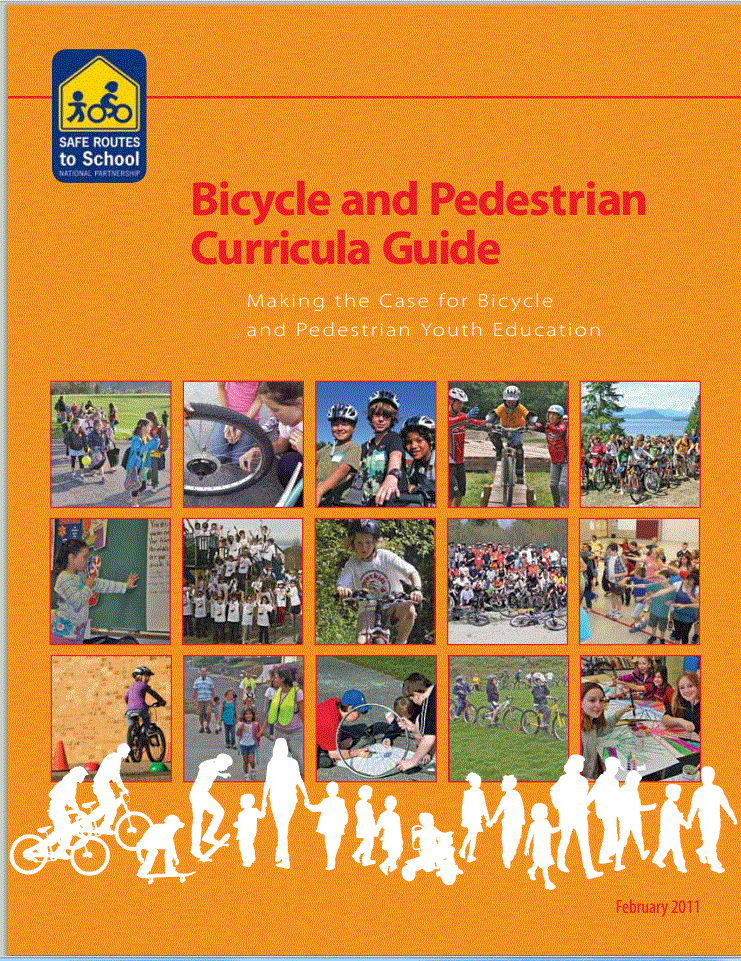
Resource Library
Page 106 of 107 pages. This page shows results 2101 - 2120 of 2138 total results.
Fact Sheet, Case Study
Partnerships Supporting Students, Families and Communities
Research has consistently demonstrated that students’ academic achievement isinfluenced by a variety of conditions outside the school, including their physical, social, emotional and economic circumstances.
Report, Case Study
Improves the Built Environment
This report focuses on case studies describing how ten states (California, District of Columbia, Georgia, Illinois, Kentucky, Louisiana, New York, Oklahoma, Texas and Virginia) are awarding their SRTS federal funds to support improved infrastructure such as sidewalks, bike lanes, pathways, improved intersections, traffic calming, and more.
 Along with the transition from cold to a warm climate, more and more cyclists will be getting out to enjoy the beautiful sights the state has to offer.
Along with the transition from cold to a warm climate, more and more cyclists will be getting out to enjoy the beautiful sights the state has to offer.
Fact Sheet
A survey of district/county office of education perceptions and practices
This research brief summarizes key results from a confidential online survey given to California school board members on “Physical Activity and Physical Education in California Schools” developed by the California School Boards Association (CSBA) and California Project LEAN (Leaders Encouraging Activity and Nutrition) (CPL).
 As Safe Routes to School programs have increased across the country, a clear need for better data management at the national level has become apparent. Many communities have used Geographic Information System (GIS) mapping in assessments of the built environment, but because there is not a central place to store data, this information is stuck, in a sense, at the local level.
As Safe Routes to School programs have increased across the country, a clear need for better data management at the national level has become apparent. Many communities have used Geographic Information System (GIS) mapping in assessments of the built environment, but because there is not a central place to store data, this information is stuck, in a sense, at the local level.
Report, Case Study
A Catalyst for Building Partnerships and Leveraging Resources
This report showcases how SRTS programs are resulting in the implementation of infrastructure improvements that close gaps in the non-motorized transportation network. Click here to read more about the four communities that were showcased – Avondale, AZ; Bozeman, MT; Knoxville, TN; and Miami, FL.
 In June 2013, the American College of Sports Medicine released their most recent fitness ranking of the 50 largest US metropolitan areas.
In June 2013, the American College of Sports Medicine released their most recent fitness ranking of the 50 largest US metropolitan areas.
Webinar
This webinar from November 21, 2013 provides perspective on the importance of MAP-21 funding in underserved communities.

 "We can never be satisfied as long as our children are stripped of their self-hood and robbed of their dignity."
"We can never be satisfied as long as our children are stripped of their self-hood and robbed of their dignity."
Report
Strategies to Increase Physical Activity Among Youth
In December 2012, the U.S. Department of Health and Human Services (HHS) released The Physical Activity Guidelines for Americans Midcourse Report: Strategies to Increase Physical Activity Among Youth.
 After Congress and the President were unable to agree on a deal to continue funding for federal agencies and programs through the annual appropriations process, the federal government was shut down and non-essential employees were sent home. The shutdown is now in its second week, and there is no sign of progress towards a resolution.
After Congress and the President were unable to agree on a deal to continue funding for federal agencies and programs through the annual appropriations process, the federal government was shut down and non-essential employees were sent home. The shutdown is now in its second week, and there is no sign of progress towards a resolution.
Fact Sheet
The Federal Volunteer Protection Act
People who volunteer for a nonprofit or school may be concerned about a lawsuit if an injury occurs. This fact sheet provides an overview of legal protections designed to shield volunteers from liability.
 This October I was asked to write a guest post for the Green Trips program blog on how families and children can learn about their impact on the environment, their health, and their budgets by choosing to bike or walk for transportation instead of using a car.
This October I was asked to write a guest post for the Green Trips program blog on how families and children can learn about their impact on the environment, their health, and their budgets by choosing to bike or walk for transportation instead of using a car.
Fact Sheet, Case Study
A Guide for Citizens, Planners and Engineers
The guide contains tactics for building or rebuilding cities and suburbs in ways that encourage walking.
 While it seems that the MAP-21 transportation law passed fairly recently, Congress only passed a two-year bill and MAP-21 expires in September 2014. Congress is starting to hold hearings on the transportation law and to consider how to fund the next bill.
While it seems that the MAP-21 transportation law passed fairly recently, Congress only passed a two-year bill and MAP-21 expires in September 2014. Congress is starting to hold hearings on the transportation law and to consider how to fund the next bill.
Evaluation
This resource provides a compilation of tools developed for the Safe Routes Partnership's Local School Project and other projects to help in creating a user-friendly quantitative and qualitative framework, data collection tools, and a data collection plan. It includes a parent survey in English and Spanish.
 Over the past decades bicycle safety education has developed into its own field, ultimately being implemented in a variety of ways, depending primarily on the amount of time and resources available to convey important concepts. These choices are not easy and inevitably we, as educators, must make informed compromises.
Over the past decades bicycle safety education has developed into its own field, ultimately being implemented in a variety of ways, depending primarily on the amount of time and resources available to convey important concepts. These choices are not easy and inevitably we, as educators, must make informed compromises.
Fact Sheet
Walking and Bicycling Audits
These briefings sheets were developed with funding support from the National Center for Safe Routes to School. The briefing sheets are intended for use by transportation engineers and planners to support their active participation in the development and implementation of Safe Routes to School programs and activities.

